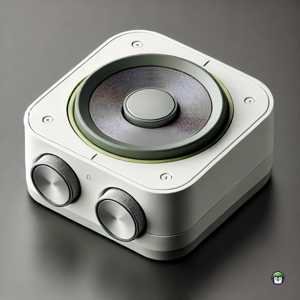Ultrasonic sensors are essential components in modern electronics, providing a precise and reliable method for distance measurement. These sensors are widely used in robotics, automation, and security applications where non-contact measurement is crucial. By leveraging sound waves, ultrasonic sensors determine distances accurately, making them ideal for projects requiring real-time spatial awareness.
Among the most popular ultrasonic sensors is the HC-SR04. It is affordable, easy to use, and compatible with open-source hardware platforms like the ESP32. In this article, we will explore the working principle of the HC-SR04, its benefits, and how to integrate it into your projects using MicroPython. We will also provide a parts list, wiring diagram, and sample code to help you get started quickly.
References:
Table of Contents
How Ultrasonic Sensors Work
The HC-SR04 ultrasonic sensor operates by emitting high-frequency sound waves from its transmitter module. When these waves encounter an object, they reflect back to the sensor’s receiver module. The sensor then calculates the time taken for the sound waves to return and, using the speed of sound, determines the precise distance to the object. This method ensures accurate measurements, making it suitable for applications where precision is critical, such as autonomous navigation, liquid level monitoring, and security systems.
Why Use the HC-SR04?
One of the main reasons for the HC-SR04’s popularity is its simplicity and effectiveness. It uses a single-wire communication protocol, making it easy to integrate with microcontrollers like the ESP32 or Arduino. Additionally, it boasts a measurement range of 2 cm to 400 cm, with an accuracy of approximately 3 mm. Compared to infrared sensors, ultrasonic sensors perform better in environments with varying light conditions, ensuring consistent distance readings regardless of ambient lighting.
Parts List
To set up the HC-SR04 with an ESP32, you will need the following components:
- ESP32 development board
- HC-SR04 ultrasonic sensor
- Jumper wires
- Breadboard
Wiring Diagram
HC-SR04 to ESP32 connections:
- VCC → 3.3V (or 5V if required)
- GND → GND
- Trig → GPIO5
- Echo → GPIO18
Integrating HC-SR04 with an ESP32
In open-source hardware projects, integrating the HC-SR04 with an ESP32 microcontroller unlocks a range of possibilities. Developers can use MicroPython or Arduino IDE to interface with the sensor, collecting and processing real-time data. This setup is useful for home automation, smart parking systems, and even agricultural monitoring, where precise distance measurement can optimize water usage in irrigation systems.
MicroPython Code
Below is a simple MicroPython script to read distance values from the HC-SR04 using an ESP32:
from machine import Pin, time_pulse_us
import time
TRIG = Pin(5, Pin.OUT)
ECHO = Pin(18, Pin.IN)
def get_distance():
TRIG.value(1)
time.sleep_us(10)
TRIG.value(0)
duration = time_pulse_us(ECHO, 1, 30000)
distance = (duration * 0.0343) / 2
return distance
while True:
dist = get_distance()
print("Distance: {:.2f} cm".format(dist))
time.sleep(1) Conclusion
Ultrasonic sensors like the HC-SR04 offer a versatile and cost-effective solution for accurate distance measurement in various applications. Their ease of use, reliability, and adaptability to open-source platforms make them an excellent choice for developers working on IoT and automation projects. By leveraging the HC-SR04 with an ESP32, FOSS enthusiasts can create innovative solutions that enhance efficiency and automation across multiple industries.
Whether you’re building a smart parking system, a robotic navigation system, or an automated irrigation solution, the HC-SR04 provides the accuracy and reliability needed for your project. With its simple wiring, compatibility with MicroPython, and affordability, it remains a go-to sensor for distance measurement in DIY and professional applications.


Leave a Reply